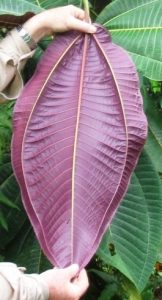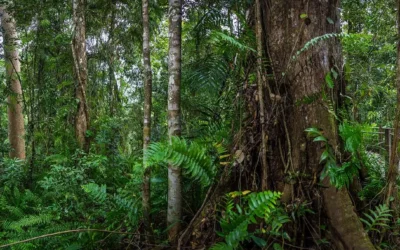Rainforest Pests in the Wet Tropics
Rainforest pests and weeds have long been a major problem in Australia.
Thanks to our isolation and the presence of plants and animals found nowhere else in the world, Australia is highly susceptible to biological invaders. We have more weeds than any other country in the world. Part of the reason we have so many is the fact that early settlers believed Australia needed to be improved. They did this by introducing foreign species into our environment and changing the way in which our Rainforests evolved, all with the hope of reflecting a more European lifestyle.
Native grasses have become quite rare these days thanks to extensive planting of foreign grasses that the introduced cattle seemed to prefer in their diet. These days most weeds and rainforest pests tend to enter the country on planes and travellers’ clothes or shoes. Some of these can have a devastating effect on Australia’s native plants and wildlife. This is why our quarantine laws are among the strictest in the world, allowing us to protect the Rainforests of Australia for generations to come.

Pesky insects are interestingly the most dangerous pests we have overall despite their small sizes. Fire ants are especially dangerous. They turned up in Brisbane in February 2001 from South America. They have been spotted in Cairns on occasion but haven’t become established yet. These ants are very aggressive and sting repeatedly when aggravated. Fire ants eat almost anything and can theoretically wipe out local endangered plants and animals. They also destroy irrigation and machinery as well as invading drinking water sources which they protect fiercely. Here in Cairns Electric ants, are for the moment a bigger concern than the Fire ants as they are already established. They were first detected in 2006 and have been successfully eradicated in four locations in Cairns. Electric ants are tiny, even for ants, are golden brown in colour, move slowly and are often found in heaps. They also originated from South America.

Pesky vertebrates are the pests most people tend to notice first thanks to their relatively large sizes. Cane Toads are without a doubt the most maligned of the pests residing in North Queensland. They were introduced to Gordonvale from South America via Hawaii by local farmers hoping to control the cane beetle. The problem, of course, is that the cane beetle lives higher up on the cane stalks than the cane toad does. Since very few local animals can eat cane toads and since cane toads reproduce so rapidly, they have now spread all the way to Kimberley in North West Australia. Many local frog species have been in decline since the cane toad was introduced to the region.
Pigs are another pest that were introduced by early sailors. They released them into the wild to secure a food source for future ship wrecked sailors. Pigs have the nasty habit of rooting around the forest floor with their tusks looking for food. Since rainforest trees have very shallow roots this undermines the trees stability and many die by falling over or from being exposed to fungal diseases. Pigs produce plenty of piglets and are good at hiding in the rainforest. Pigs can prove fairly intelligent and remain hard to catch!
Australian Tropical Rainforest Facts provided by Skyrail Environmental Rangers and images supplied by Wet Tropics Management Authority and Department of Nature Resources and Water.



